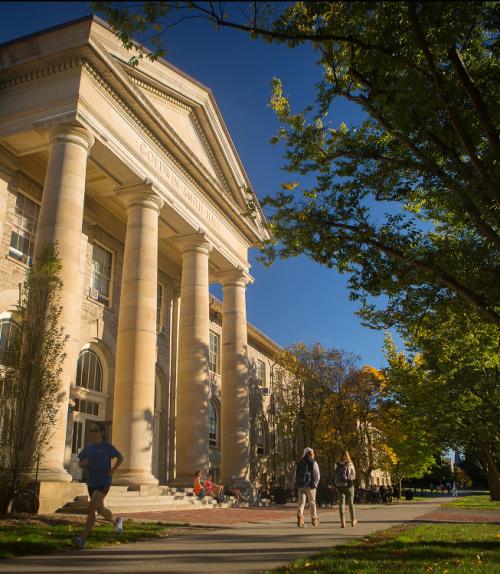By a 2 to 1 margin, faculty in the College of Arts & Sciences approved a new undergraduate curriculum for students. Plans will soon be under way to implement it.
The new curriculum focuses on the theme of exploration and reaffirms the college’s commitment to a liberal arts and sciences education. Changes will make the curriculum easier for students to navigate, simplify the graduation requirements and expand student opportunities for interdisciplinary work and faculty opportunities for innovative teaching.
“The biggest improvement for students under the new curriculum is the more streamlined and meaningful list of distribution requirements,” said Tom Pepinsky, associate professor of government and chair of the college’s Curriculum Review Committee (CRC). “New categories reflect areas of real faculty and student interest, including data science, global citizenship and social difference.”
The major curriculum changes include:
- Students will fulfill five different distribution categories in their first four semesters at Cornell, encouraging early exploration.
- Students must satisfy all of the following 10 distribution categories: Arts, Literature, and Culture; Social Difference; Biological Sciences; Physical Sciences; Ethics and the Mind; Social Sciences; Global Citizenship; Statistics and Data Science; Historical Analysis; and Symbolic and Mathematical Reasoning.
- The college will adopt a policy that, for the purpose of completing the language requirement, “language” means any living or extinct human language, including sign languages, offered at Cornell.
- Electives, breadth requirements and minimum course graduation requirements are removed.
Although students will be required to fulfill each of the 10 distribution categories, they may count up to two courses as satisfying two distribution requirements at once. As a result, it will be possible for students to satisfy the 10 distribution requirements with eight courses. This also means that faculty can list courses for up to two distribution categories. Currently, faculty can only designate one distribution category for their courses.
“This provides relief for students whose major and minor requirements are especially demanding,” said Derk Pereboom, the Susan Linn Sage Professor in the Department of Philosophy and senior associate dean for arts and humanities in the college, who added that the focus on fulfilling requirements early on “stands to acquaint first and second-year students with a wider range of disciplines from which to specialize.”
Now that faculty have approved the new curriculum, Ray Jayawardhana, the Harold Tanner Dean of Arts & Sciences, will convene a committee to oversee implementation, led by Rachel Bean, senior associate dean for undergraduate education and professor of astronomy.
“The new curriculum simplifies the requirements, allowing students to more easily tailor their educational experience to meet their individual needs,” said Bean. “At the same time, it continues the college’s commitment to incentivizing and challenging our students to step out of their comfort zone, investigate new ways of thinking and communicating, gain a deeper understanding of cultures, new and old, and use their knowledge to positively impact our society. I look forward to working with faculty and staff in our college and the university to implement this new curriculum.”
Students who have questions about the new curriculum can view the approved plan on the college website. Additional information will be available as the implementation plan is developed.
“The earliest that this could be rolled out would be for incoming students in Fall 2020, with Fall 2021 more likely,” Pepinsky added. “This will be done in ways that are minimally disruptive to the way that faculty design and teach their classes. We anticipate that many if not most courses already being offered will be easily moved from their existing distribution requirement to the new ones.”
The Curriculum Review Committee (CRC), established in January 2016 by former Dean Gretchen Ritter, included faculty and students from across the college. After multiple drafts and rounds of discussion across the faculty, with input from students throughout the process, members of the committee and additional faculty members signed onto a final draft proposal, issued in June 2018. At an Oct. 3 faculty meeting, faculty voted on amendments to the proposal, followed by an online vote of the full proposal held Oct. 15-29. A full accounting of the timeline of events that led to the passage of this new curriculum can be found on the college website.




